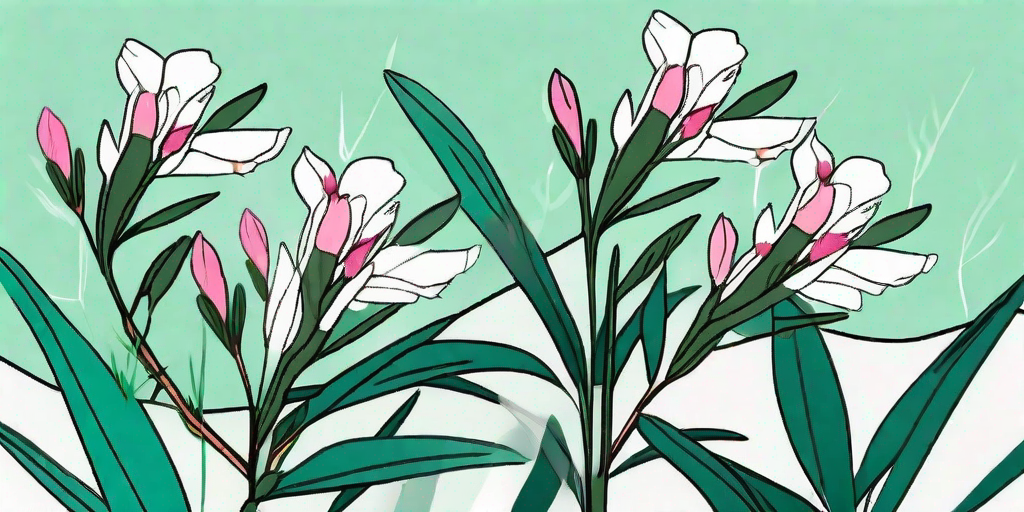
Hold onto your gardening gloves, green-thumbed friends, because we're about to dive into the vibrant world of Oleander propagation. This Mediterranean beauty, known for its glossy leaves and showy flowers, is a popular choice for gardeners worldwide. But how do you propagate this plant successfully? Well, buckle up, because we're about to embark on a horticultural journey that will turn your garden into an Oleander oasis.
The Basics of Oleander
Before we start, let's get to know our star plant a little better. Oleander (Nerium oleander) is a hardy evergreen shrub that can grow up to 20 feet tall. It's a real show-off, boasting a plethora of pink, red, white, or yellow flowers from late spring to fall. But don't let its beauty fool you - all parts of this plant are toxic if ingested. So, while it's a feast for the eyes, it's definitely not one for the dinner table!
Native to the Mediterranean region, Oleander thrives in full sun and well-drained soil. It's drought-tolerant and can withstand salty coastal conditions, making it a versatile choice for various landscapes. It's also a favorite among butterflies and hummingbirds, so if you're looking to attract these winged wonders, Oleander is your go-to plant.
Propagation: The How-To
Now that we're acquainted with Oleander, let's get down to the nitty-gritty - propagation. There are two main methods: seeds and cuttings. While growing from seeds can be a fun experiment, it's a bit like playing horticultural roulette since the offspring may not resemble the parent plant. So, for consistency's sake, we'll focus on propagation from cuttings.
First, you'll need a healthy mother plant. Choose a stem that's about a foot long, has several leaf nodes, and is neither too young nor too old. Think Goldilocks - you want it just right. Cut it at a 45-degree angle, remove the leaves from the lower half, and voila! You've got your cutting.
Rooting Your Cutting
Next, dip the cut end into rooting hormone. This step isn't mandatory, but it's like giving your cutting a little pep talk before the big game. Then, plant it in a pot filled with well-draining soil. Keep the soil moist, but not waterlogged. Too much water can lead to root rot, and nobody wants that.
Place the pot in a warm, bright spot, but avoid direct sunlight. Think of it as a plant spa - you want the conditions to be relaxing, not scorching. After a few weeks, your cutting should start to develop roots. You can check by gently tugging on the stem. If it resists, congratulations! You've successfully propagated an Oleander.
Caring for Your New Plant
Once your Oleander has rooted, it's time to move it to its forever home. Choose a sunny spot with well-drained soil. Remember, Oleander loves the sun, so the more, the merrier. But it's not a fan of wet feet, so avoid areas where water tends to pool.
Water your new plant regularly until it's established, then cut back to watering only when the soil is dry. Feed it with a balanced fertilizer in spring and summer to encourage blooming. And don't forget to prune it after flowering to promote bushier growth.
FAQs
Is Oleander easy to grow?
Absolutely! Oleander is a hardy plant that can withstand a variety of conditions. As long as it has sun and well-drained soil, it's happy.
Can I grow Oleander indoors?
Yes, you can. However, it needs lots of light, so place it near a south-facing window. And remember, it's toxic, so keep it out of reach of pets and children.
When is the best time to propagate Oleander?
The best time to take cuttings is in spring or early summer. This gives the plant plenty of time to establish before winter.
Conclusion
And there you have it - the foolproof guide to propagating Oleander. With a little patience and care, you can turn a single cutting into a garden full of these Mediterranean beauties. So, what are you waiting for? Grab those gardening gloves and get propagating!















